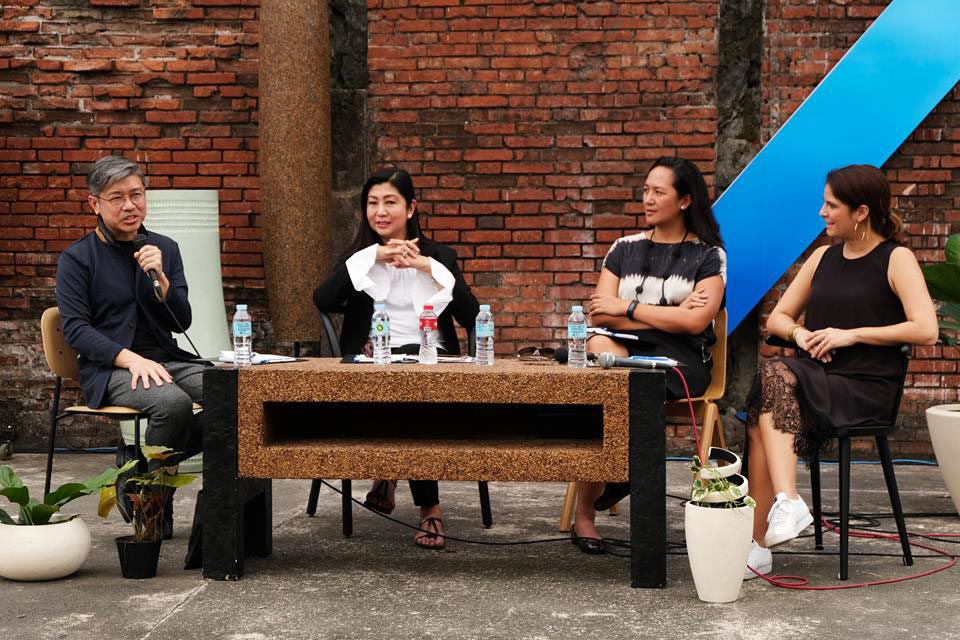
Shelter dialogue recap: Architecture as a global practice
“We are starting the ascent to going global,” said Cathy Saldaña, Managing Director of ARCO Group, in a discourse on architecture as a global practice. Saldaña was joined in the round table discussion by Denise de Castro, Principal of DDC Architectural Studio; and Raymond Hoe, Director of Scott Brownrigg’s Singapore office. The Shelter Dialogue, moderated by urban planner Julia Nebrija, was part of the three-day Anthology Festival 2018 held in Fort Santiago, Manila.
Within the ruins of Rajah Sulayman Theater, the rise and the tensions of practice that goes beyond the borders of the archipelago were deliberated. The three architects agreed that architects, especially the students, only need to take advantage of what has been started while maintaining their local identity to deliver design that is competitive worldwide.

On internationalization and local identity
As proponents of going global in the field of architecture, the panelists talked about how they took their designs into the international scene, and how other architects and designers can do it too.
“We are doing work in the United States right now and our clients there are mostly in hospitality; and we work in the Philippines for foreign clients as well,” shared de Castro. “I think it works both ways as we work abroad and we work in the Philippines . . . And so it’s always working at giving design quality that they (foreign clients) are expecting, usually this goes beyond Philippine standards.”
Saldaña also mentioned projects here and abroad (China, Myanmar, and Vietnam to name a few countries) that put their company not only in the directories of developers in the country but also internationally. “If we really know how to embrace ‘internationalization,’ the globalization that is happening in the Philippines, then every Filipino architect can be a global architect,” Saldaña pointed out.
While advocating to welcome influences from different countries, new methods, and technologies, the panelists still push for maintaining identity. Hoe emphasized that maintaining identity is what’s going to give you an edge in the practice.
On the tensions of practicing in a global approach
Hoe said that “people are the most complicated beings,” so resistance and disagreements in terms of design and implementation are expected. This human complexity creates tensions in the practice. However, he said that through healthy dialogues and periodic reviews, this challenge can be resolved.
De Castro also mentioned problems arising from the very local levels of the government in terms of urban planning, zoning, and tourism, as well as the Building Code. Saldaña agreed that there have been problems in the Building Code that must be addressed. For instance, the gap between the civil engineers and the architects, those who sign the codes, contractors, and lobbyists.

On the future of Philippine Architecture
Technology plays a huge part in the future of Philippine architecture. “It must be taken advantage of,” De Castro encouraged. Architects and designers alike must use technology as a competitive tool and bridge the gaps by connecting through it. Nebrija also stressed the significance of a paradigm shift for the collaboration of designers and engineers.
Also, according to Hoe, Architecture is a product of science, engineering, and art. Thus, like a scientific method, Saldaña pressed that one must: 1) understand technology (BIM), 2) understand the materials (particularly sustainable materials), 3) understand the methodology, and 4) know how to translate it graphically.
“That’s why I emphasized earlier on understanding style [and] documentation in order for you to meet global standards,” Saldaña added. “That’s how you can be global either here in the Philippines or when you go outside the country. And hopefully, just like Denise, come back.”
Hoe further said that “constantly asking ourselves where we want to be next,” makes practicing globally less intimidating. He encouraged the young architects in the audience to have a “mindset to embrace the forthcoming future.” ![]()


